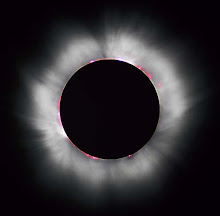According to the
Gospel of Luke there were many people who wrote about Jesus:
Luke 1:1 Inasmuch
as many have undertaken to compile a narrative of the things which have been
fulfilled among us…
So how do we tell
which gospel accounts are valid and which are not?
One way of course
is through the church that Jesus created for us. Jesus didn’t leave a book - he
left a church that he entrusted to the apostles and their successors to assist
us. Many of the earliest Christian church leaders such as Papias (AD 125) and
Irenaeus (AD 180) wrote about the gospels and their authorship. They not only tell
us about the gospels that are valid but also those that are not. The writings
of both Papias [Fragments 3:15, 16, 6:1, 19:1, 20:1]1 and Irenaeus [Against
Heresies Book III.1.1, 10.5, 11.8, 16.3]2 name Matthew, Mark, Luke
and John as valid gospels. Furthermore, Irenaeus lists a variety of gospels
that aren’t valid and tells us about their authorship and the agendas of those
who created spurious accounts.
Do we have any
other way to tell which gospel accounts are valid? Potentially we do. The Old
Testament foreshadows the New Testament. So where in the Old Testament are the
four gospels foreshadowed? According to one of the early church leaders, St.
Augustine, the four gospels are foreshadowed in the story of the garden of Eden3.
Foreshadowing is merely where the outline of a story in the Old Testament
parallels the outline of events in the New Testament. The allegorical parallels
between the four rives and the four gospels are:
The first river,
Pishon, which compasses the whole land of Havilah symbolizes the gospel of
Matthew. Traditionally, Matthew left Judea for the area of Havilah (Arabia)
where he preached until he died. According to some of the early church leaders,
Matthew’s gospel was written first. It is also interesting to note that the
first river in Genesis is noted for having gold and the Gospel of Matthew is
the only gospel with the story of the visit of the wise men bringing gifts
including gold.
The second river,
Gihon, flows from Ethiopia to the Nile in Egypt and symbolizes the gospel of
Mark. Traditionally, Mark eventually reached Egypt and became the first bishop
of Alexandria, Egypt and lived there until he died. According to some of the
early church leaders, Mark’s gospel was written second.
The third river,
Tigris, symbolizes the gospel of Luke. The Tigris formed the central portion of
the Assyrian Empire. Luke the Evangelist is believed by many to have been from
Antioch, Syria which had once been part of the Assyrian Empire. According to
some of the early church leaders, Luke’s gospel was written third.
The fourth river,
Euphrates, symbolizes the gospel of John. The Euphrates originates in Asia
Minor (Turkey) which was the area where the apostle John lived after leaving
Judea until he died. According to some of the early church leaders, John’s
gospel was written fourth.
The foreshadowing
of the four gospels by the four rivers coming from Eden match the traditional
chronological order of authorship of the four gospels based on the writings of
the early church fathers. Also, the geographic regions associated with each of
the four rivers match the geographic regions traditionally associated with each
of the authors of the four gospels. Furthermore, information unique to the
first river includes information unique to the first gospel, Matthew.
Now I’m going to
point something out to skeptics. Why do you think that the author of Genesis
listed the rivers in a specific order of one through four? It serves no
literary purpose. The author of Genesis could have numbered the four rivers in
any order or more appropriately not numbered them at all. It is also odd that
he numbers them in the order that he did. Geographically, Gihon is the furthest
west and the furthest south while Tigris is the furthest north and east. So if
he were to number the rivers in a geographic direction either Gihon or Tigris
should have been first or fourth but they aren’t. Also if he were ordering from
proximity to the center of Eden, then Tigris should have been fourth since it
is the furthest from the center of Eden, but it is third. Since there is no
literary or geographic reason to give the first to fourth order for the four
rivers, then there must have been another reason. That reason was prophetic. It
is not a coincidence that the four rivers listed in their specific order of one
to four matches the traditional chronological order of authorship of the four
gospels and the associated geographic regions for their authors.
References
1. The Comprehensive New Testament pp. 436, 567, 684
2. Ibid p. 567, 604, 684
3. Augustine civ 13.21 “The Garden is the church itself, as
we can see from the Canticle of Canticles [4:12]; the four rivers are the four
gospels; the fruit bearing trees are the saints.”
Dr. J. Clontz,
Aidan University






No comments:
Post a Comment